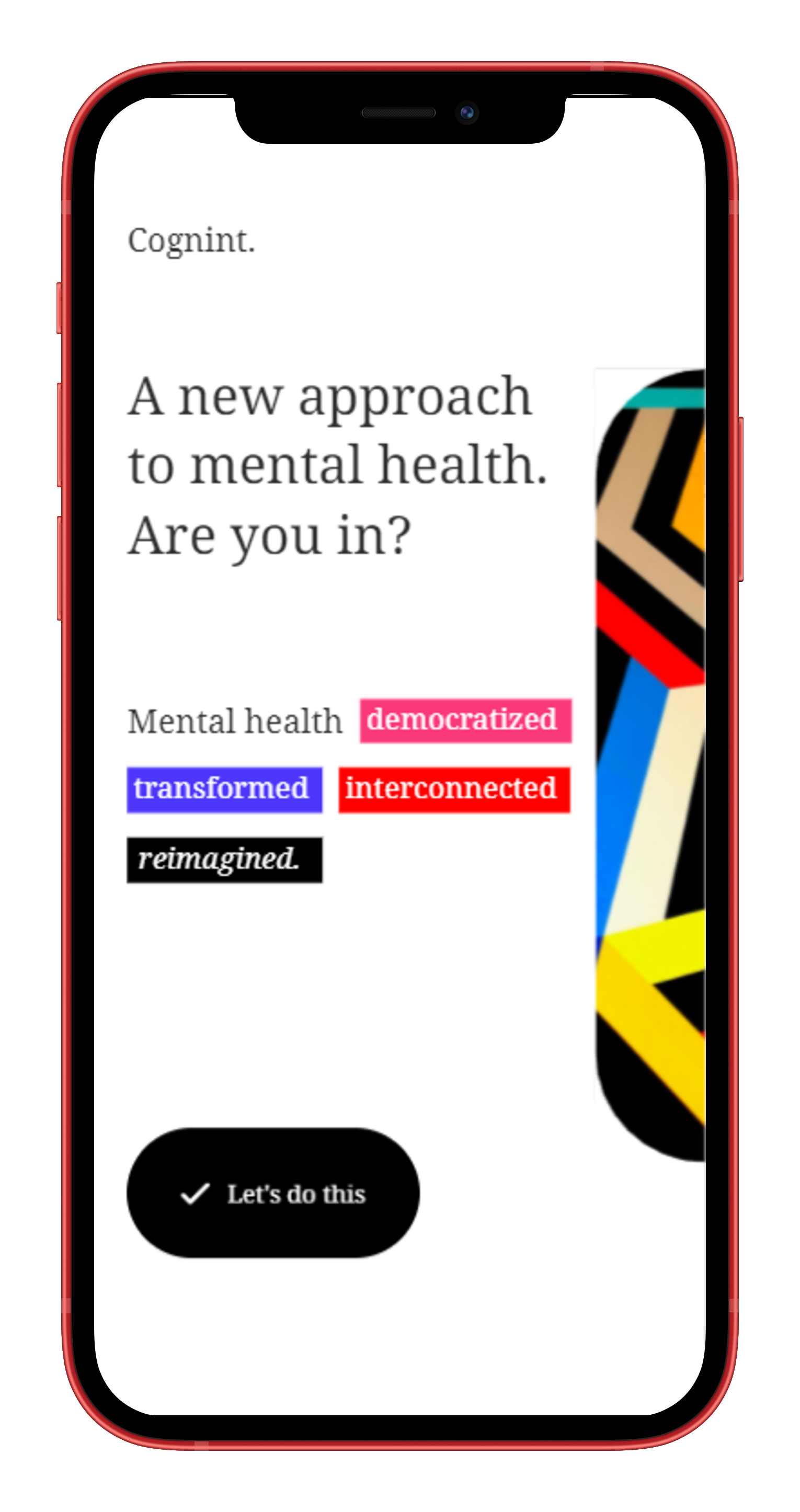Cognint/Cognitivae

Quick Case Study Takeaways
The full-scale emergence of a ravaging global mental health crisis is affecting he lives of 21% of U.S. adults in 2020, equating to 1 in 5 adults. Moreover, developing countries bear the brunt of the public health infrastructural costs, as little to no immediate, semi-automated support technologies enable those in need to have the basic human right of having someone to talk to.
Cognint (formerly "Cognitivae") is harnessing state-of-the-art natural language processing (NLP)-integrated dialogue interfaces and uses natural conversational semantics to diagnose and recommend therapeutic techniques for over 7 mental illnesses.
I employed design principles by implementing classic font styling and white space to produce an engaging and supportive atmosphere of both comfort, yet sublminal sensations of openness. In contrast to modern design systems that conventionally employ dark themes (e.g. meditation and wellness apps), light illustrations with inter-mixtures of darker themes throughout the interface create openness and encourage more usage during engaging hours that affect real-time mental health management. By taking advantage of information architecture within human-computer dialogue interaction philosophies, I was able to craft dialogue that engaged users in territories globally. Interfacing dialogue components with UI functionalities is difficult. UI is typically seen as a state-managed dynamic (or static) receiver of data. However, dialogue is a continuous unpredictable stream of data between the ML chatbot and end-user, where the end-user is in full control and agency to direct converation. Creating a supportive interface here was crucial.